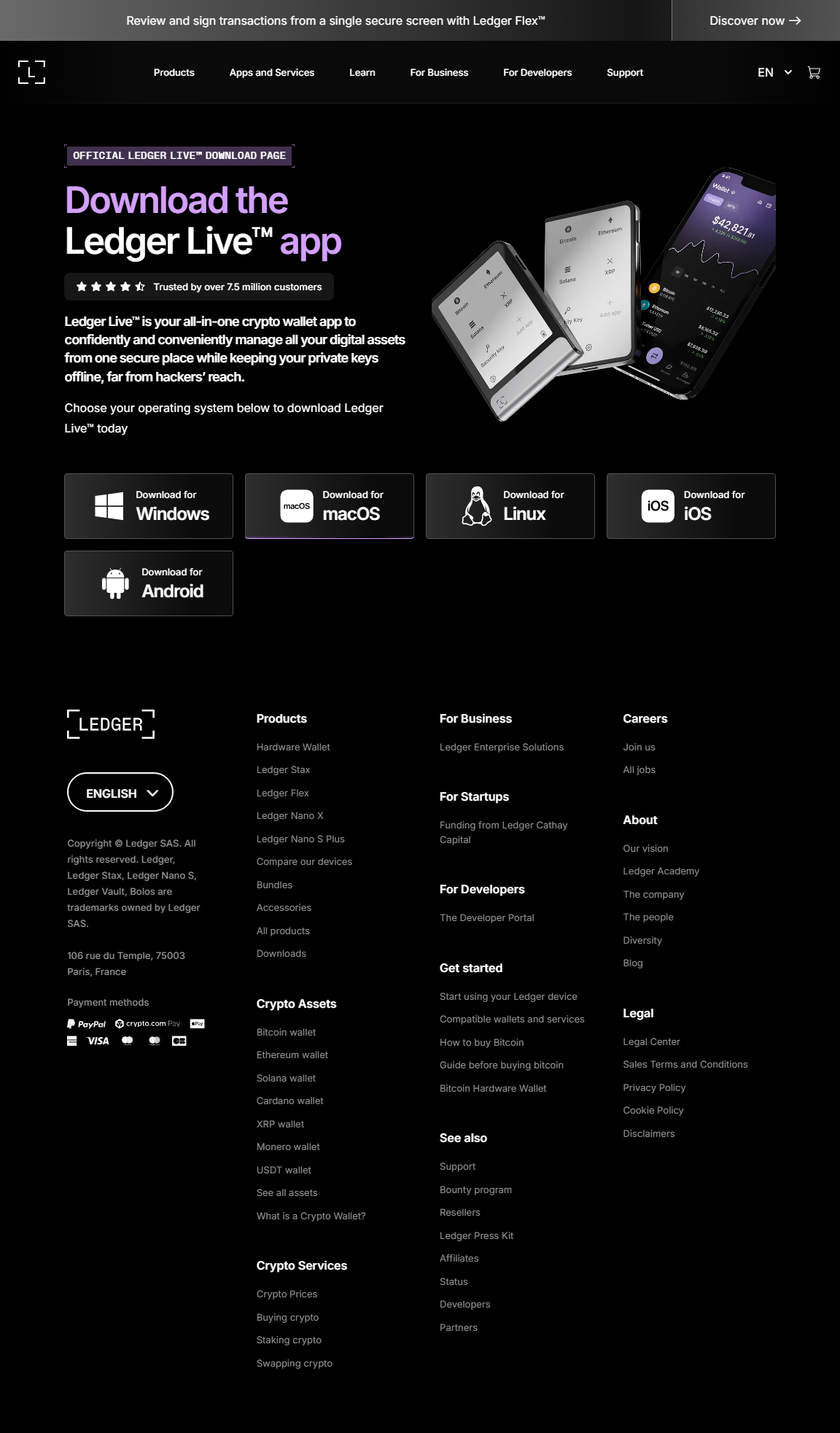Ledger Login: Secure Access to Your Cryptocurrency
Learn how to log in to your Ledger hardware wallet safely, manage crypto assets, and troubleshoot common access issues.
What is Ledger Login?
Logging into a Ledger wallet is the process of accessing your cryptocurrency assets through Ledger's secure system. Unlike online wallets, Ledger keeps your private keys offline on a hardware device. This ensures that even if your computer is compromised, your crypto remains safe. Ledger login can refer to accessing your account via Ledger Live or directly interacting with the hardware wallet for transactions and staking.
For beginners and mid-level users, understanding the login process is critical. A secure login ensures safe transfers, staking, and monitoring of digital assets without exposing your funds to online threats.
Ledger Login Options
Ledger supports multiple ways to access your crypto safely. Here’s a breakdown:
- Ledger Live Login: Connect your Ledger device to the official Ledger Live app on desktop or mobile. Authenticate transactions using your device PIN.
- Direct Wallet Access: Some users interact directly with supported third-party wallets (like MetaMask or MyEtherWallet) using Ledger for signing transactions, without storing keys on the computer.
- Mobile Ledger Access: Ledger Nano X supports Bluetooth, allowing mobile login through Ledger Live securely.
Step-by-Step Ledger Login Guide
- Connect Your Ledger Device: Plug in via USB or Bluetooth. Ensure the device is powered on and unlocked with your PIN.
- Open Ledger Live: Launch the official app. Ledger Live will detect your device automatically.
- Authenticate on Device: Confirm connection and actions directly on your hardware wallet. This prevents unauthorized access.
- Access Accounts: Add new accounts or access existing ones to view balances, make transfers, or stake cryptocurrencies.
- Verify Transactions: Always check transaction details on your Ledger device before confirming.
Security Tips for Ledger Login
- Never share your recovery phrase or PIN.
- Always use the official Ledger Live app or verified third-party wallets.
- Check for firmware updates before login.
- Avoid public Wi-Fi for accessing your Ledger wallet.
- Regularly backup your recovery phrase offline in a secure location.
Common Ledger Login Issues
1. Device Not Detected
Ensure your USB or Bluetooth connection is active. Restart Ledger Live or try another port. Updating the app often fixes detection issues.
2. PIN Entry Error
Entering the wrong PIN multiple times may lock your device. Carefully enter the correct PIN and avoid sharing it.
3. Ledger Live Outdated
Older versions may fail to detect your device or show incorrect balances. Always install the latest official version of Ledger Live.
Ledger Login vs Other Wallet Logins
| Feature | Ledger Login | Software Wallet Login |
|---|---|---|
| Private Key Storage | Offline, on hardware wallet | Online or device storage, vulnerable |
| Security | High, requires device confirmation | Medium, depends on password/2FA |
| Ease of Use | User-friendly with Ledger Live | Varies widely |
Frequently Asked Questions
Can I log in without my Ledger device?
No. The hardware wallet is required because your private keys never leave the device. Ledger login is designed this way for maximum security.
Is Ledger login safe on public networks?
While Ledger Live encrypts data, public Wi-Fi can be risky. Use a private network whenever possible.
How do I troubleshoot a failed login?
Check device connection, ensure firmware and Ledger Live are updated, and verify PIN entry. Restarting both device and app often resolves minor issues.
Final Thoughts
The Ledger login process is designed for security and ease-of-use. By understanding the steps, following best practices, and staying vigilant against phishing or malware, users can confidently access, manage, and grow their cryptocurrency portfolios. Whether using Ledger Live or third-party wallet integrations, a secure login is the first step toward complete control over your digital assets.
